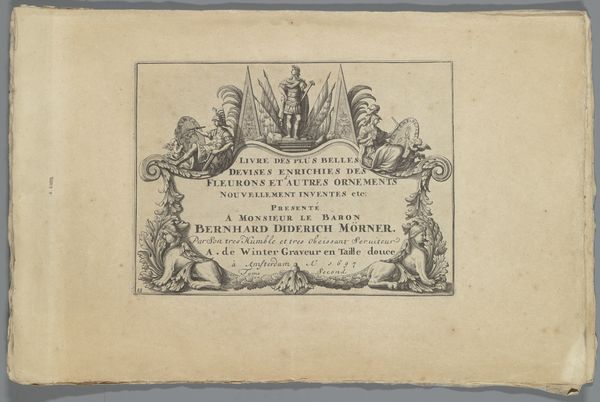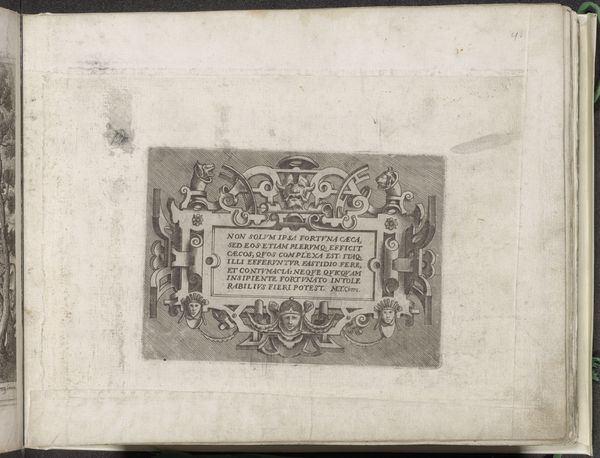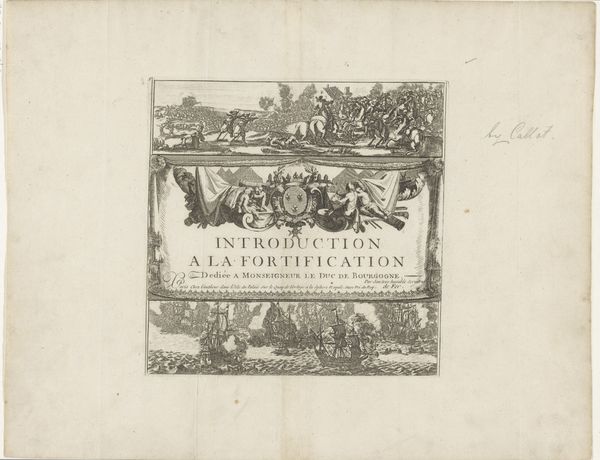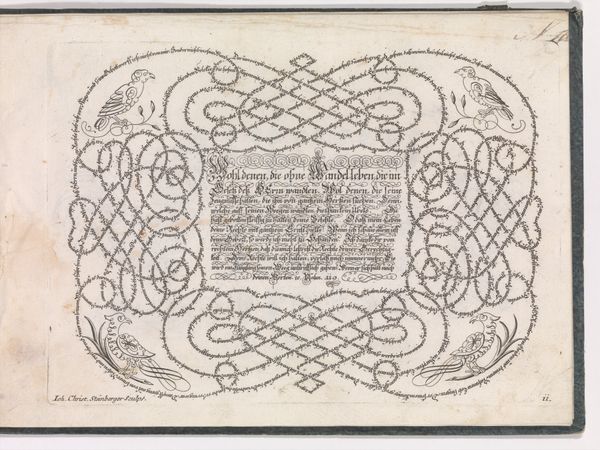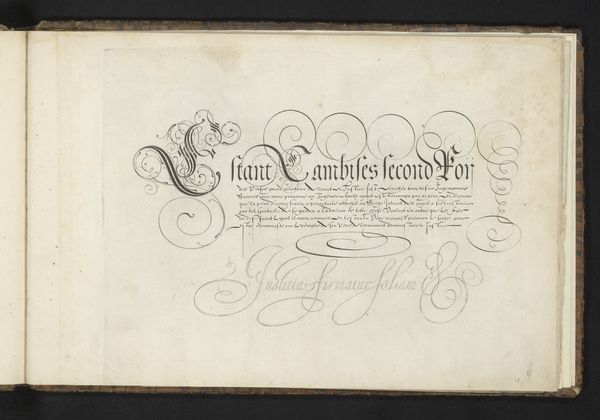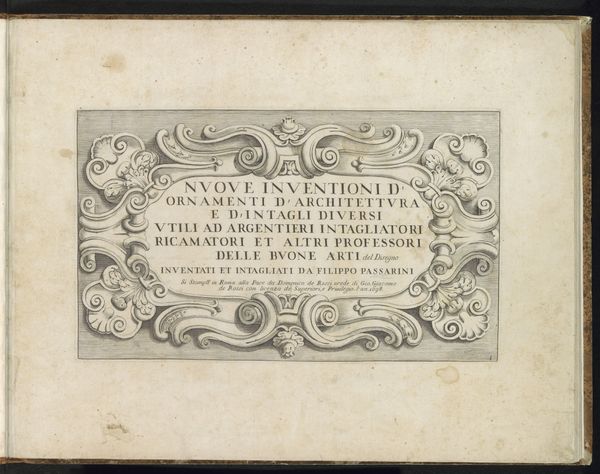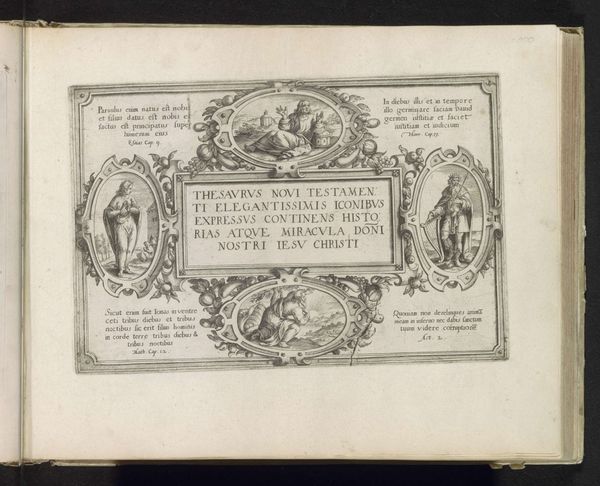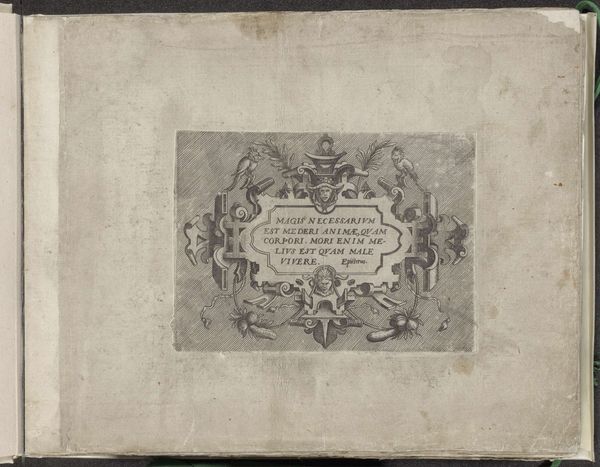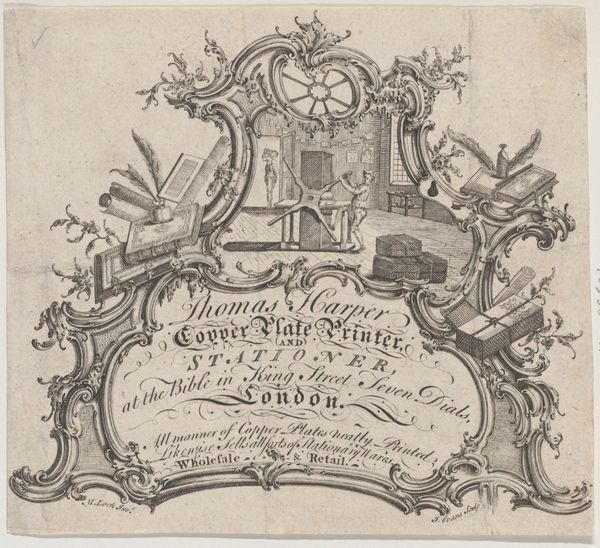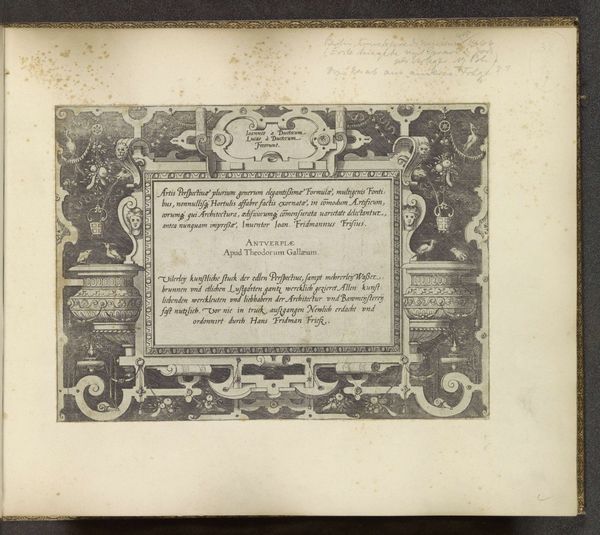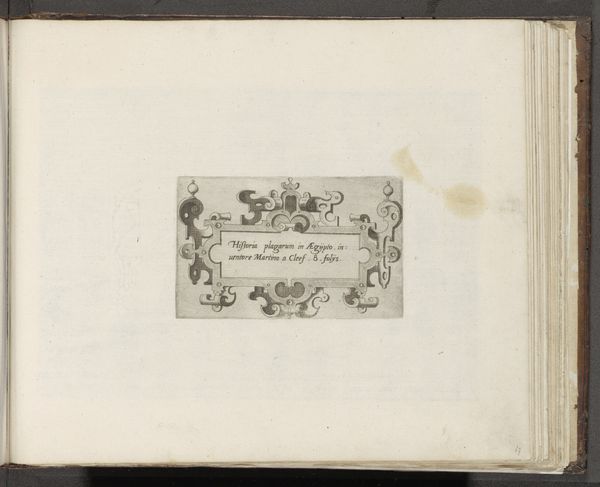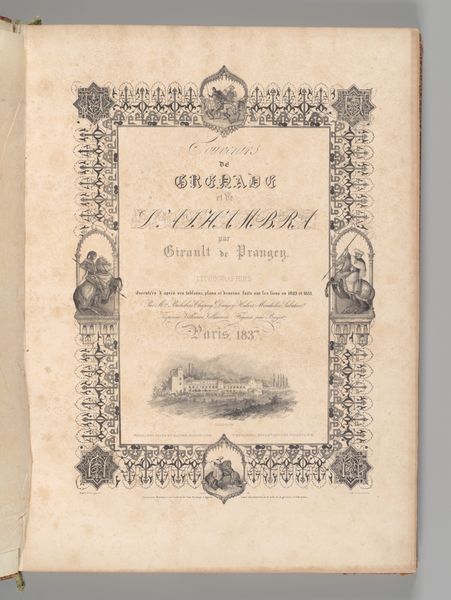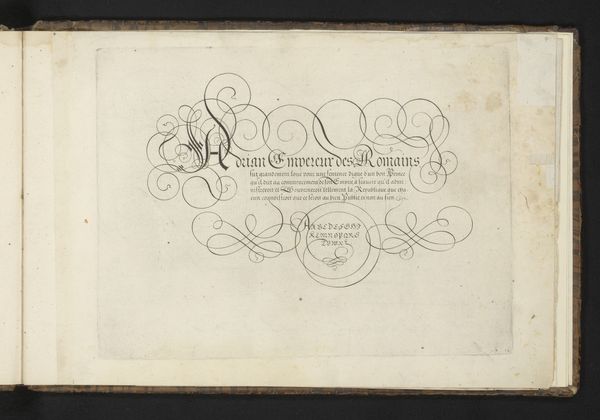
Title Page to 'Tooneel Der Voornaamste Nederlands Huizen, En Lust Hoven, Naar T Leven Afgebeeld' 1660 - 1693
0:00
0:00
drawing, graphic-art, print
#
drawing
#
graphic-art
#
baroque
#
dutch-golden-age
# print
#
landscape
Dimensions: Plate: 6 1/8 × 9 13/16 in. (15.5 × 25 cm) [width approximate]
Copyright: Public Domain
Curator: Let's delve into this remarkable title page. It's "Tooneel Der Voornaamste Nederlands Huizen, En Lust Hoven, Naar T Leven Afgebeeld," by Carel Allard, dating back to between 1660 and 1693. A complex title for what amounts to a sale catalog for land holdings, wouldn’t you say? Editor: Absolutely! The eye is drawn to the intertwining floral design. The entire print has an air of understated opulence about it. The flowers are clearly more than just decoration; they must represent something about status and taste, wouldn’t you think? Curator: They certainly elevate the aesthetic. What fascinates me is the deliberate contrast between the fine copperplate engraving and the rather… ostentatious subject. This print, promising views of grand Dutch houses, was meticulously crafted – copper plates being expensive things– to entice buyers. The sheer number of impressions signals not just artistic skill, but the demands of a booming market in country estates, each a locus for the application of intense labor in their development. Editor: Indeed, the Baroque styling and flourishes provide a framework for understanding social aspiration at the time. The cartouches at the base suggest not just geographic locations, but ideals: rustic charm versus established trade. Notice also how the floral ornamentation cradles the text. One set of text speaks in Dutch and one set in French, showing how luxury culture appeals across different social strata. It makes the promise of an upper crust cosmopolitan lifestyle practically floral. Curator: Precisely! These aren’t just images; they're advertisements. Copperplate engraving made it possible to reproduce accurate architectural drawings in considerable quantity, something that was increasingly in demand from the moneyed class, whether Dutch or from the continent, as is signaled here by its bilingual rendering. Editor: I now feel the entire composition exudes an attitude towards the growth of leisure across Europe. What once were productive resources now were spaces for personal comfort. How perfectly the flowers express it! Curator: And understanding its context as a printed object transforms our understanding of this artwork’s intent and utility. Editor: Looking again, the detail is even more stunning, which transforms what would normally seem plain on its surface to a deeper cultural significance, doesn't it?
Comments
No comments
Be the first to comment and join the conversation on the ultimate creative platform.
